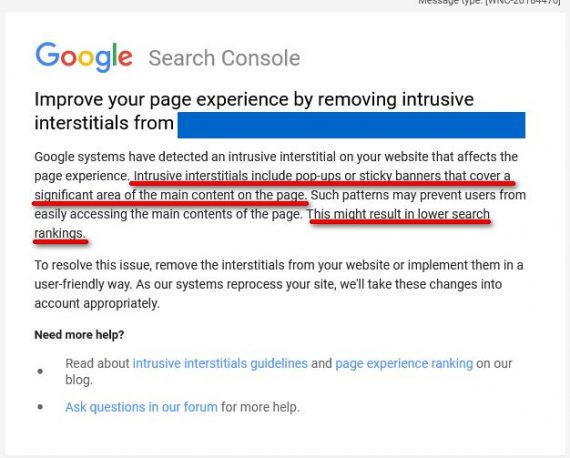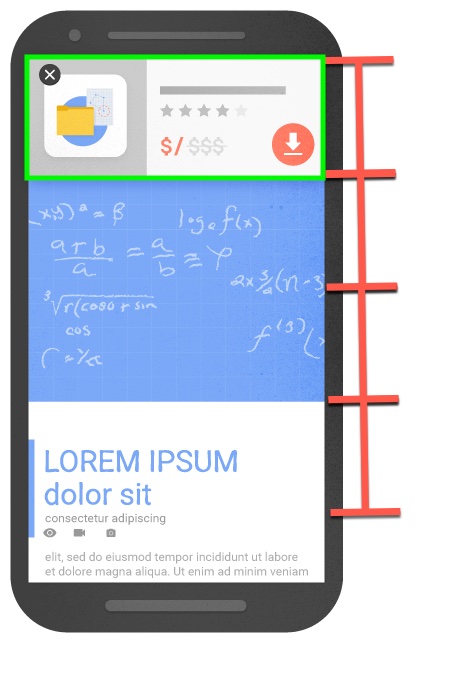Google defines “intrusive interstitials” as elements that overlay an entire web page, obstructing users’ view of the content.
In 2016 Google issued a warning about interstitials, stating they can frustrate users and provide a poor user experience.
Since 2017, intrusive interstitials have been a Google organic ranking signal. That “intrusive interstitials update” was only for mobile users, leaving publishers confident that desktop interstitials were acceptable.
In 2021 Google rolled out an update focused on the desktop user experience. Google confirmed then that intrusive interstitials affected desktop rankings, too. Soon after, Google posted warnings in Search Console directing users to remove or correct an intrusive interstitial — or see their rankings decline.

In 2021 Google began posting interstitial warnings in Seach Console, stating, “Improve your page experience by removing intrusive interstitials,” and adding, “Intrusive interstitials … cover a significant area of the main content of a page.”
The immediate ranking impact of the 2017 and 2021 updates was mild. Nonetheless, web admins who value organic search traffic should play it safe and align interstitials to Google’s requirements.
However, interstitials remain the most effective way to build an email list and attract leads. Google itself shared that mobile interstitials drove 23% more revenue to a games developer. And, depending on the study, upwards of 40% of email signups are on interstitials.
Here’s how to use interstitials without getting into trouble with Google.
Dialogs Are Better
Per Google, interstitials cover the entire page, preventing interaction until closed, and “dialogs” cover only part of the page.
Google approves of dialogs provided they don’t block users from accessing the page. Thus the fundamental rule for using interstitials and dialogs is not to ruin a user’s first experience with the page.
And that makes sense. Google’s mission is to provide quick answers to searchers. So build your popups and overlays to allow users to interact with the page. Based on Google’s example, that means using a mobile dialog of not more than 25% of a visible page. Google provides no example for desktop popups.
Regardless, for both dialogs — smartphones and desktops — the smaller, the better. Even the smallest dialogs can be intrusive if they interrupt users’ access.

Google provides this example of an acceptable smartphone popup (in the green box).
Functional Popups
Google recognizes the need for functional (non-promotional) popups and will not penalize pages with:
- Adult-disclosure interstitials that prevent visitors from using a page until they provide their age. Sites in certain niches and jurisdictions must collect visitors’ age by law.
- Cookie interstitials that block visitors from using a page without first choosing their data-sharing preferences.
More Tactics
Plenty of search optimizers have offered examples and tactics of acceptable (to Google) popups.
Google provides no ironclad guidelines of what’s right or wrong — only that the popups should not obscure the entire page. That suggests, again, that dialogs are acceptable and interstitials are not.
Hence these methods should not by themselves hurt rankings:
- Banners used in moderation that don’t obstruct users’ view of the content.
- Exit popups that don’t interrupt interactions with a page and appear only when a user is leaving.
- “Hello bars” — narrow banners that stick to the top of the page as users scroll down without preventing interaction.





